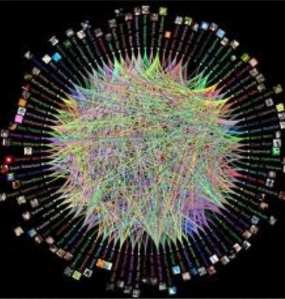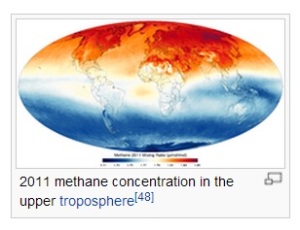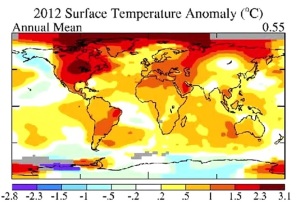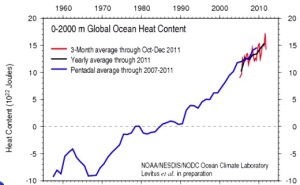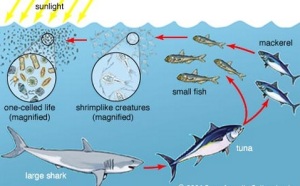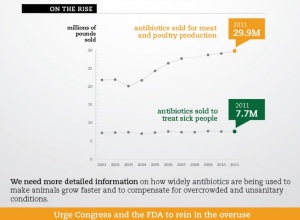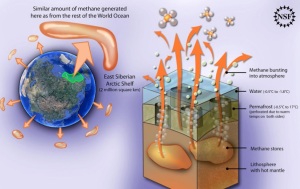The microscopic plants that form the foundation of the ocean’s food are declining. The tiny organisms, known asphytoplankton, work hard to gobble up carbon dioxide to produce half the world’s oxygen output—equaling that of trees and plants on land. But their numbers have dwindled since the dawn of the 20th century, with severe consequences for ocean ecosystems and the planet’s carbon cycle. Researchers at Canada’s Dalhousie University say the global population of phytoplankton has fallen about 40 percent since 1950. That translates to an annual drop of about 1 percent of the average plankton population between 1899 and 2008 and the greatest loss in in the last 5 years. Just as the heating of the poles is accelerating, so will the loss of some microbes. Warmer temps may mean more of other kinds of microbes, but the key concern is how that relates to C02 and Methane. C02 and Methane are the greatest concerns to planet Earth. The scientists believe that rising sea surface temperatures are to blame. “It’s very disturbing to think about the potential implications of a century-long decline of the base of the food chain,” said lead author Daniel Boyce, a marine ecologist. They include disruption to the marine food web and effects on the world’s carbon cycle. In addition to consuming CO2, phytoplankton can influence how much heat is absorbed by the world’s oceans, and some species emit sulfate molecules that promote cloud formation.
“In some respect, these findings are the beginning of the story, not the end,” Boyce said. “The first question is what will happen in the future. We looked at these trends over the past century but don’t know what will happen 10 years down the road.” The study “makes a sorely needed contribution to our knowledge of historical changes in the ocean biosphere,” said David Siegel of the University of California, Santa Barbara, and Bryan Franz of NASA in an essay, also published in Nature. “Their identification of a connection between long-term global declines in phytoplankton biomass and increasing ocean temperatures does not portend well for [ocean] ecosystems in a world that is likely to be warmer,” they wrote. “Phytoplankton productivity is the base of the food web, and all life in the sea depends on it.” Boyce said he and his co-authors began their study in an attempt to get a clearer picture of how phytoplankton were faring, given that earlier studies that relied on satellite measurements produced conflicting results.
The scientists dug back into the historical record, well past 1997, the year continuous satellite measurements began. They examined a half-million data points collected using a tool called a Secchi disk, as well as measurements of chlorophyll—a pigment produced by the plankton. The Secchi disk was developed in the 19th century by a Jesuit astronomer, Father Pietro Angelo Secchi, when the Papal navy asked him to map the transparency of the Mediterranean Sea. What Secchi produced was a dinner plate-sized white disk that is lowered into ocean water until it cannot be seen anymore. The depth it reaches before disappearing gives a measure of water clarity. That can be used as a proxy for phytoplankton population in a given area, since the tiny organisms live close to the ocean’s surface, where they are exposed to sunlight they use to produce energy. Data gathered with a Secchi disk are roughly as accurate as observations collected by satellites, Boyce said, although satellites have greater global reach. The researchers found the most notable phytoplankton declines in waters near the poles and in the tropics, as well as the open ocean. They believe that rising sea temperatures are driving the decline. As surface water warms, it tends to form a distinct layer that does not mix well with cooler, nutrient-rich water below, depriving phytoplankton of some of the materials they need to turn CO2 and sunlight into energy.
This may also have a lot to do with the China Algea Sea. The largest algal bloom ever recorded in China has turned the Yellow Sea green and may be related to pollution from agriculture and industry. Officials in the city of Qingdao had used bulldozers to remove 7,335 tonnes of the growth from beaches according to the Xinhua news agency. The phenomenon has become an annual occurrence in the region over the past six summers. This year’s incident has swathed 28,900 sq km (11,158 sq miles), twice as much as the previous biggest bloom in 2008. The algae, called Enteromorpha prolifera, is not toxic to humans or animals. However the carpet on the surface can dramatically change the ecology of the environment beneath it. It blocks sunlight from entering the ocean and sucks oxygen from the water suffocating marine life. The algae thrives on an abundance of nutrients in the sea. University of Cambridge and EnAlgae Project researcher Dr Brenda Parker said that the Chinese bloom may well be linked to industrial pollution. “Algal blooms often follow a massive discharge of phosphates or nitrates into the water. Whether it’s farming, untreated sewage or some kind of industrial plant that is discharging waste into the water,” she said. The recent explosion of the algae pointed to a dramatic change in the ecosystem which was probably not natural. “That would probably be an indicator that something is a little bit unbalanced,” said Parker. She said that the 2009 example algal bloom on the Brittany coast was a similar example of a human-induced algal bloom.
It is vital that we all shift our perspective towards a balanced approach to living in accord with nature as apposed to polluting our natural resources that are clearly warning us of significant changes ahead.


